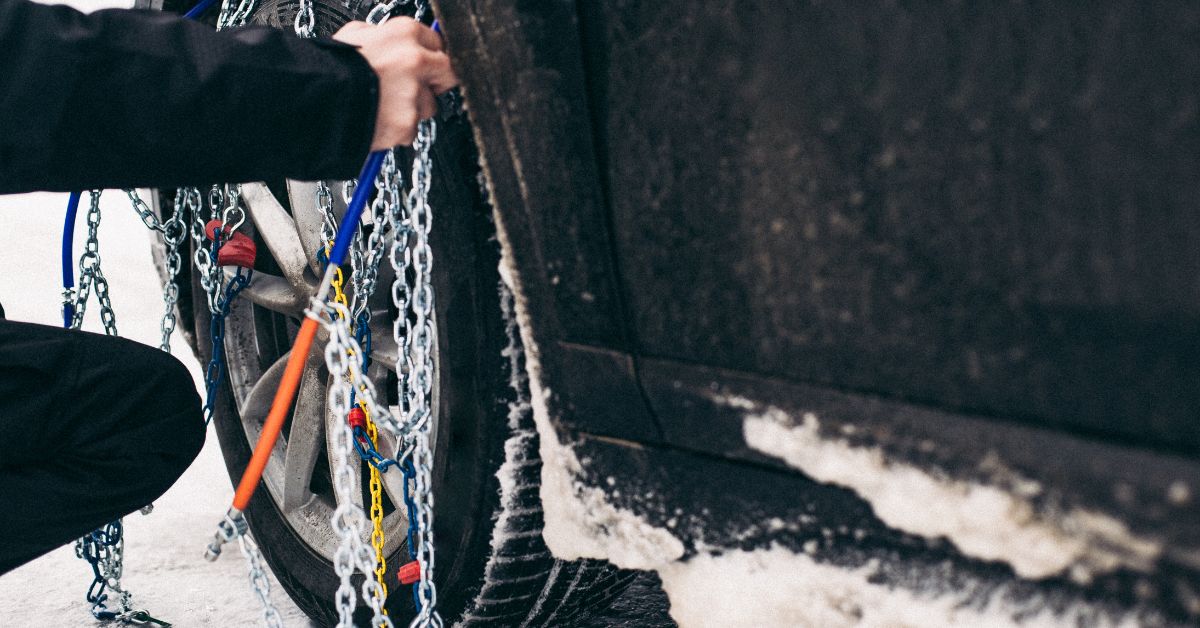Traction laws were designed to protect those who drive in areas prone to snow or ice. In a place like Salt Lake City, which not only gets heavy wintery conditions but also is near many of Utah’s ski resorts, these laws are an important way to keep motorists safe. Read on to learn more about what these laws entail and where they are implemented.
What Are Traction Laws?
Traction laws are used during the winter months (or times of the year when snowy weather conditions may be present) to keep everyone on the road safe. These protocols can vary depending on the state, but they typically involve using snow tires or tire chains at all times or on specific routes. If you live in an area where it’s common to see snow during this time of year, check with your state’s Department of Transportation to learn if there are any additional steps you need to take.
Traction Laws in Utah
In Utah specifically, traction laws are primarily in effect for those traveling through the Cottonwood Canyons; however, there may be other “chain up” areas throughout the state. You can view which roads have active traction laws here.
In contrast to states like Colorado, where these laws are implemented for upwards of six months at a time for some routes, Utah traction laws are active as-needed. When these are in effect, drivers should:
- Use steel link or cable chains OR
- Switch to tires with M+S or 3PMSF ratings
For those with four-wheel drive (4WD) or all-wheel drive (AWD), tires with M+S or 3PMSF ratings or using tire chains on all wheels is required. Two-wheel drive (2WD) vehicles must have 3PMSF tires or tire chains on all “drive” wheels.
Which Roads Have Traction Laws?
Only some Utah highways will implement traction laws throughout the season. These include ski area highways and high-traffic areas with high chances of severe weather. The highways most commonly on the list include:
- U.S. 89/91: Logan Canyon
- U.S. 89: Sardina Canyon
- I-80: Parleys Canyon
- U.S. 40: Deer Valley
- U.S. 40: Daniels Canyon
The ski areas that frequently implement traction regulations are:
- S.R. 159: Eden to Powder Mountain
- S.R. 226: Snowbasin Resort to S.R. 167
- S.R. 224: Park City
- S.R. 190: Big Cottonwood Canyon
- S.R. 210: Little Cottonwood Canyon
- S.R. 92: American Fork Canyon to Timpanogos Cave
- S.R. 153: Beaver to Eagle Point Ski Resort
Additional routes that may require these include:
- S.R. 30
- S.R. 44: U.S. 191 to Manila
- S.R. 143: Parowan to Panguitch
It’s also important to note that many of these routes surround the Salt Lake City Airport, so if traveling from the airport to a ski resort or otherwise, remain cautious.
The Importance of Using Traction Devices
Whether you’re a Utah resident or just visiting for a ski vacation, every road user can benefit from having the right tires on their vehicle during this time of year. Since icy conditions can happen throughout the state periodically throughout the year, motorists should take the necessary precautions.
In one winter storm in 2018 alone, more than 300 crashes occurred. Fortunately, none of these resulted in severe injury, but it highlights the importance of ensuring you are prepared to handle these inclement conditions. An easy way to do this is to ensure you check the weather before leaving the house and keep your tire chains somewhere in your vehicle in case you need to apply them during the day.
This winter season, do what you can to keep yourself (and others) on the road safe. Not doing so is not only dangerous but may be considered negligent.
Salt Lake City Car Accident Attorneys
The team at Steele Adams Hosman helps individuals hold others accountable when negligent actions cause them harm. We are proud to serve all of Utah and are prepared to help you fight when you need it most. Call (801) 999-1506 today to schedule a free initial consultation.




